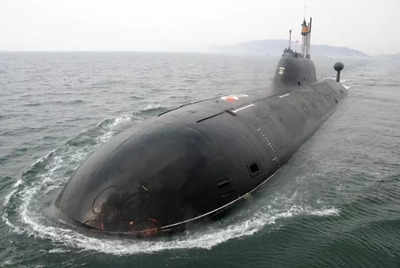NEW DELHI: The government on Wednesday cleared the mega indigenous project to build two nuclear-powered attack submarines as well as the deal to acquire 31 weaponised MQ-9B
Predator drones
from the US, collectively worth around Rs 68,000 crore, as part of the long-term plan to counter China’s aggressive and expansionist tactics in the region, sources told TOI.
The PM-led cabinet committee on security (CCS) approved the long-pending Rs 40,000 crore `Project-77’ to construct the two nuclear-powered attack submarines (called SSNs in naval parlance), which will be armed with conventional missiles, torpedoes and other weapons, at the ship-building centre at Visakhapatnam, the sources said.
The CCS also gave the green signal to the around Rs 28,000 crore ($3.3 billion) acquisition of the 31
MQ-9B
drones, with 15 Sea Guardians earmarked for Navy and 8 Sky Guardians each for Army and IAF, paving the way for the govt-to-govt deal to be inked within the next few days.
Both the SSNs and the MQ-9B remotely-piloted aircraft are `hunter-killer’ weapon platforms because they can quietly gather intelligence, track enemy targets at extended ranges and then destroy them if required. The twin-capability, one deep underwater and the other high in the air, is crucial given China’s rapidly-expanding naval footprint in the Indian Ocean Region and beyond.
“It will take around 10-12years for the first SSN, with a 190 MW pressurised light-water reactor and a displacement of almost 10,000-tonne, to roll out. The two SSNs will be around 95% indigenous, with foreign help only being taken for some design consultancy,” a source said.
The original case was for six such SSNs, which with their speeds of over 30 knots, long endurance and capability to discreetly operate in enemy waters are meant for conventional (non-nuclear) warfare. “Apart from anti-ship missiles and torpedoes to take out enemy warships and submarines, they will also have land-attack cruise missiles. The other four SSNs will be cleared at a later stage,” a source said.
The approval comes soon after India commissioned its second nuclear-powered submarine with nuclear-tipped ballistic missiles (called SSBN, which is for strategic deterrence, not conventional warfare) as INS Arighaat on Aug 29, and plans to induct the third as INS Aridhaman early next year.
TOI was the first to report on Aug 10 about the impending commissioning of INS Arighaat as well as that the case for the two SSNs was headed for the final approval of the CCS after repeated iterations and inter-ministerial consultations.
The first MQ-9B remotely-piloted aircraft, in turn, will be delivered within three years, with all the 31 coming in six years after being assembled in India. They are capable of long-range strategic ISR (intelligence, surveillance, reconnaissance) missions and over-the-horizon targeting, and can also undertake anti-warship and anti-submarine warfare operations.
Designed to fly for almost 40 hours at altitudes over 40,000-feet, the 31 fighter-sized drones will come with Hellfire missiles, GBU-39B precision-guided glide bombs, navigation systems, sensor suites and mobile ground control systems, among other associated equipment.
India will also equip the drones with indigenous weapons, including the naval short-range anti-ship missiles (NASM-SR) being developed by DRDO, in the future.
Under the deal, drone-manufacturer General Atomics will set up a MRO (maintenance, repair, overhaul) facility here and provide performance-based logistics support for eight years. Apart from making an investment in India and sourcing 34% of components from Indian companies, the company will also provide expertise and consultancy to DRDO and others to develop such high-altitude, long endurance drones indigenously.
The sheer operational utility of SSNs can be gauged from the fact that the
AUKUS
military pact among the US, UK and Australia, with an eye firmly on China, revolves around Canberra gradually acquiring at least eight SSNs.
In India, as per long-standing approved plans, four SSBNs and six SSNs, apart from 18 diesel-electric submarines, are required to tackle the twin-threat from China and Pakistan.


